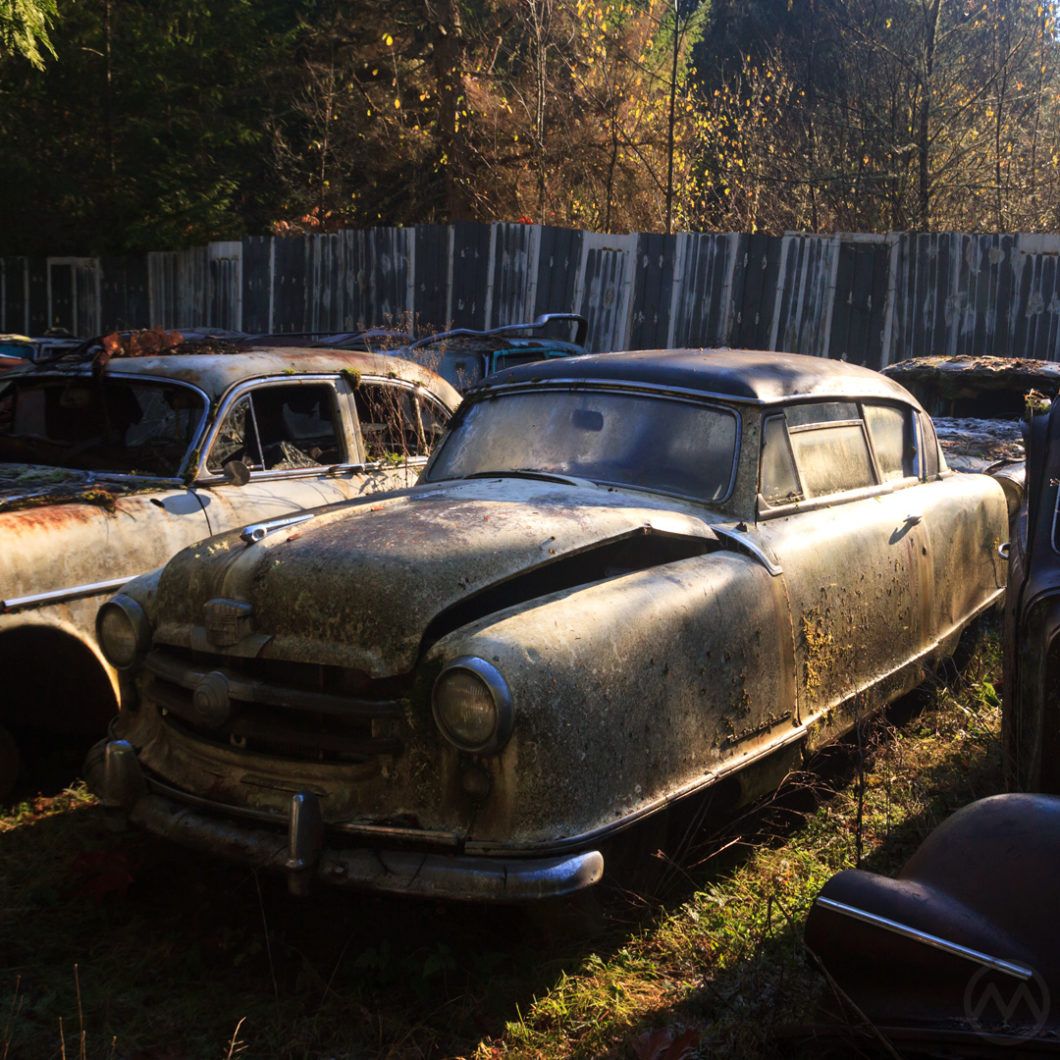Later on, “Rambler” and AMC would become synonymous with “economy,” and it’s true that the original Nash Rambler was economical, but it was much more of a small premium Nash than a bare-bones economy car – and that was part of why it succeeded.
The original Nash Rambler debuted in April of 1950, but the seeds were planted much earlier. It had arguably been in the works since Nash engineers Nils Erik Wahlberg and Meade Moore designed a small, experimental unibody car in 1935.
That project didn’t get built, but after Charles Nash hired George Mason to replace him as CEO (merging Nash and Kelvinator, Mason’s previous employer, to do so) Nash recruited ex-GM engineer Ted Ulrich and several other skilled engineers from Budd, whose unibody ideas had informed Citroën’s Traction, and launched a unibody car, the Nash 600, in 1941. So Nash was ahead on making a lighter car, if not a much smaller one.
Thinking Small
During WW2 the big 3 all flirted with the idea of postwar “compacts,” and Moore could see that wartime rationing made the declining fuel mileage and increasing size of “standard” cars (a consequence of cars growing larger and heavier in the 1930s) annoying to many customers, particularly in urban areas (Moore spent the war in Connecticut).
Studebaker had already launched a smaller, economy-minded car, the Champion, in 1939, but by 1942 it was only marginally smaller than a 600.
After the war, Moore pitched an idea for an “urban car” to CEO George Mason, the very kind of car Ford and Chevy were contemplating but ultimately decided not to build because they cost as much to create as larger cars, and might siphon sales from the larger vehicles. Chevy cancelled it’s “Cadet,” Ford transferred it’s “Light car” to France.
Sensing an opportunity for new markets, Mason approved two small car projects – Moore’s Rambler and Bill Flajole’s NXI – the Metropolitan, which was a truly internationally-sized small car.
The plan for small cars allowed Mason to recruit George Romney from the American Manufacturer’s Association – where Romney had concluded there would be substantial demand for smaller cars in the 1950s (a prediction that came true, in fits and starts).
A Premium Small Car
Like the big 3, Mason recognized that the design & tooling for a small car wasn’t cheaper than a big one – it cost $13M to bring the Rambler to life, a big number in 1949. To make it profitable, and to interest the public, it couldn’t feel like an “economy car,” nor could it be just like a regular Nash. So it bowed first as a posh convertible – the “Landau.”
It bore Nash’s “Airflyte” enclosed styling and a hefty level of standard equipment, plus the old flathead six from the 600. It was small by U.S. norms (176”/4.47m), but it wasn’t cheap – it was more expensive than Nash’s Statesman or most of the lower-end big 3 cars, and it’s 2,450-lb. weight made it sprightly if not a good handler.
The limited turning circle, soft springs, and tall center of gravity made the Rambler roly-poly in turns, but pillow-soft in ride terms.
The Landau had a rollback top (necessitated by its unibody structure), rich interiors designed by Helene Rother, and lots of standard equipment. Months later it was joined by a 2-door wagon (Meade’s team felt it could not shoehorn four doors into the Rambler’s 100” wheelbase), and then in 1951, the “Country Club” hardtop; the names no doubt reflecting the aspirational nature of a “premium” compact car.
Hardtops, of course, were the latest style craze in 1951 and the addition of one to a small car made for a very unique offering.
Curiously, nobody ever wanted to claim the original Rambler as a stylist – Nash’s own designers would not admit to styling it, despite the fact that it was a genuinely well-proportioned and good looking car.
Part of that might have been the “airflyte” look – George Mason loved the enclosed front wheels despite their propensity for destroying the turning radius because they gave Nash a unique identity – but many Nash designers like Ed Anderson hated them.
Success & Change
The public really liked Nash’s nicer compact, preferring it to all the other early 50s rivals – and there were quite a few. Kaiser’s Henry J was quite popular at first, but was a truly basic car, reflected in its price and, eventually, its sales in a time of relative plenty. Willys returned to the compact space with the Aero in 1952 and Hudson arrived with the Jet in 1953.
By then, however, the Korean war and an intense competition between Ford and Chevy for sales supremacy had roiled the entire market for smaller domestic cars, which were generally bigger than foreign cars but smaller than the big 3’s offerings.
The compact competitors were gradually wiped off the map, and in pursuit of volume, the later Ramblers were gradually oriented more towards being de facto economy cars. The two-door Ramblers were dropped after 1955, then reincarnated as the “Rambler American” in 1958 – a car that was much more “economy” than “premium.”
Special thanks to Matt C. from Trust Salvage for making this photo op happen.

